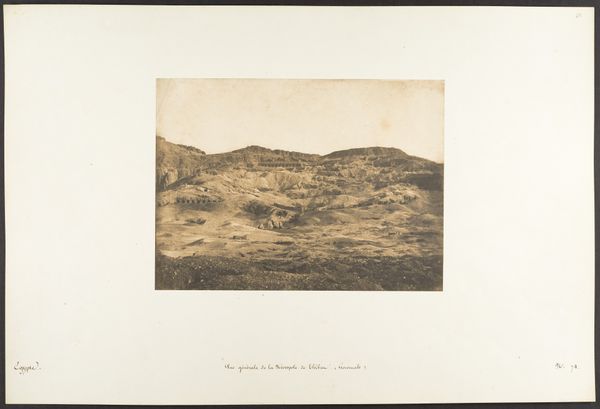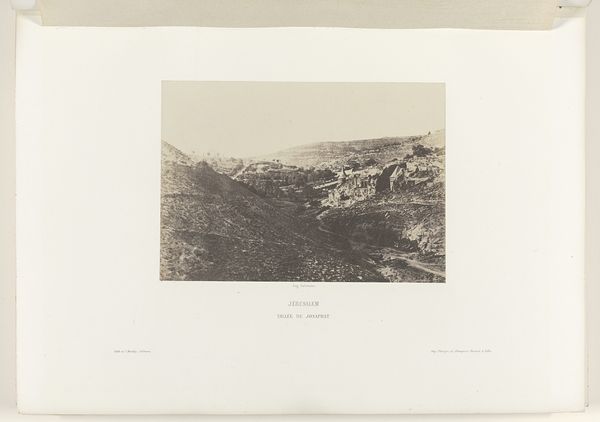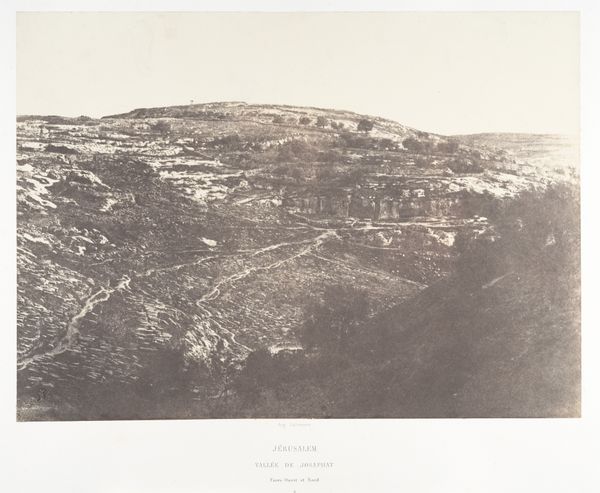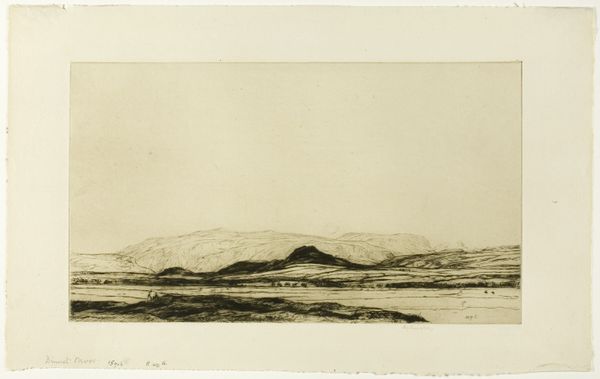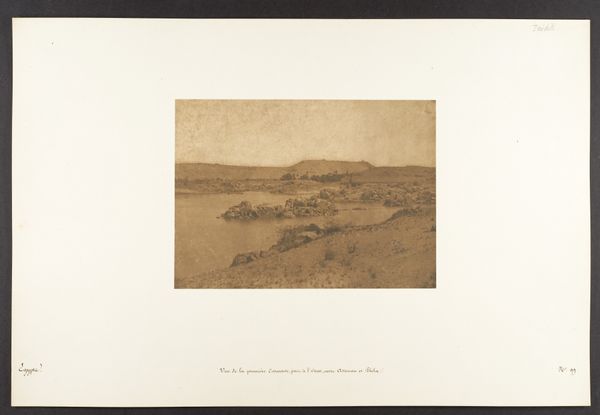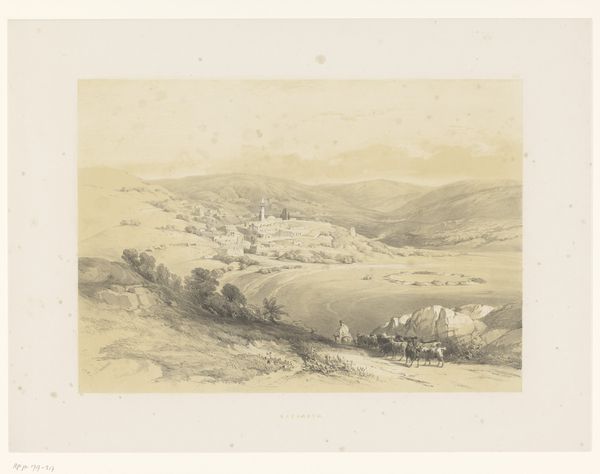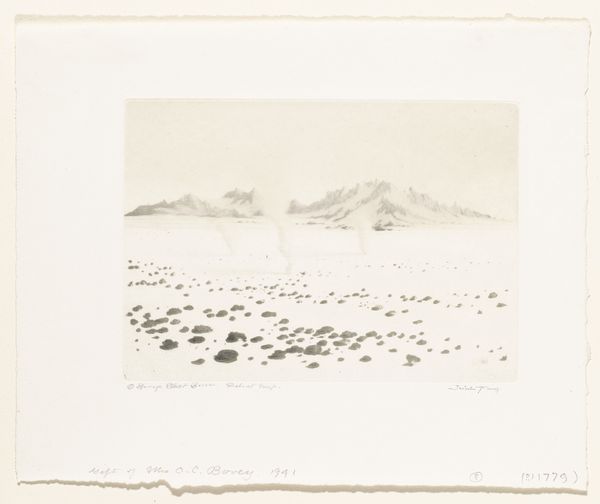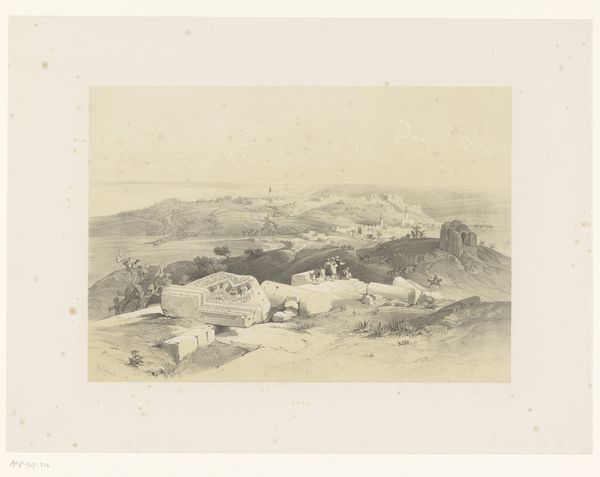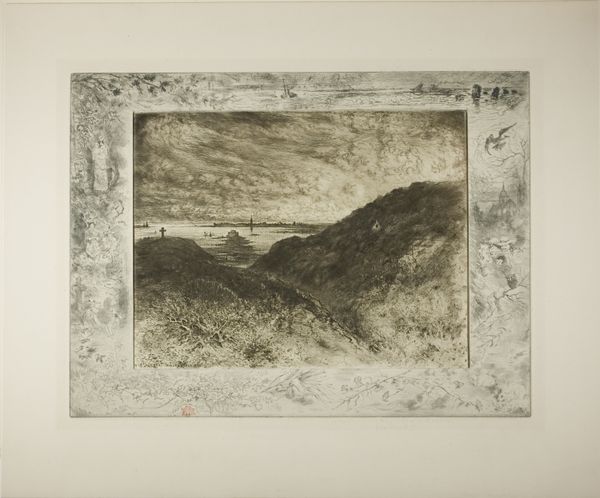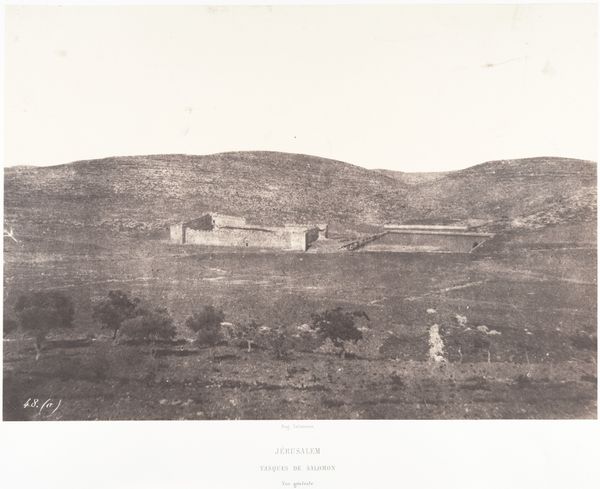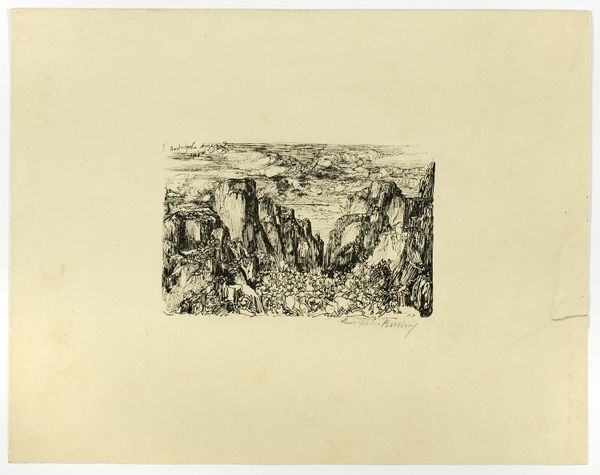
daguerreotype, photography
#
landscape
#
daguerreotype
#
photography
#
orientalism
Dimensions: Image: 6 1/8 × 8 7/16 in. (15.6 × 21.5 cm) Mount: 12 5/16 × 18 11/16 in. (31.2 × 47.5 cm)
Copyright: Public Domain
This photograph, "Vue du Village de Garara," was captured by Maxime Du Camp in the 19th century, using early photographic techniques. The image presents a seemingly simple village nestled against a rugged escarpment. Yet, what draws my attention is the way these dwellings seem almost carved out of the landscape itself, hinting at humanity’s primal connection to the earth. This motif of integration echoes across cultures and centuries. Think of ancient cave paintings, or even the modern desire for eco-architecture. The subconscious pull towards blending with nature suggests a deep-seated longing for harmony. Consider the psychological weight of shelter. These structures, seemingly fragile, represent safety and continuity. The composition evokes both vulnerability and resilience, as if mirroring the human condition itself. How do we, like these dwellings, adapt and endure within the larger landscape of existence? This interplay between structure and environment continues to resonate, reappearing in various forms throughout art and architecture, each time reflecting evolving societal values and psychological needs.
Comments
No comments
Be the first to comment and join the conversation on the ultimate creative platform.
